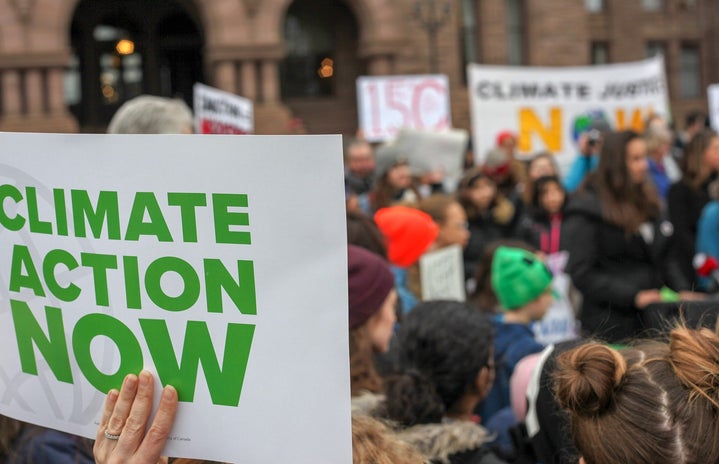Around 440.000 people were displaced from their homes, around 806 were hurt, 175 were deceased and 38 were missing. These concerning numbers are the result of one of the biggest tragedies that ever happened in Brazil.
On April 29th, the first red alert for large rainfalls in the state of Rio Grande do Sul was emitted, and since then, the area has been going through a severe inundation that detached families, submerged cities and ended food and water resources.
This conjecture, however, is not a mere development of climate change, but also the product of poorly articulated politics and negligence towards known risks and the population’s health.
Structural problems
The infrastructure destined to protect the state against floods has not received any sort of maintenance services or been renewed in years, which encompasses dikes, dams and bombs.
In Porto Alegre, the capital, the water level reached a historical record of 5,3 meters owing to a failure in the Mauá Wall, a 6-meter barrier built in the 70s in order to block the overflowing content from rivers Jacuí and Guaíba. Still, just when this construction was most needed, it did not succeed – specialists say it lacked screws and the floodgates were already bent.
To add insult to injury, a large number of citizens live near water regions and the soil’s contamination reduces its ability to absorb liquid. The truth is Rio Grande do Sul’s urban planning has been requiring changes for decades.
Weakening of environmental legislation
In view of the connection between the rains and human interference in ecosystems, constant efforts to impoverish environmental laws in Brazil also explain why this tragedy was not avoided.
At this very moment, the Senate is debating the approval of Law n° 2159/2021, which, promoted by ruralist leaders, attempts to ease bureaucratic processes concerning actions and enterprises that have impacts on nature. Nevertheless, the proposal actually stimulates the implementation of an over-flexible protocol.
Some of the alterations introduced were the conversion of formal licensing into an automatic one, which would take form via internet declaration; the establishment of limits for the type of social-environmental compensation demanded from entrepreneurs; the removal of veto power from Chico Mendes Institute, an organization allowed to stop projects that harm conservation units; among others.
“The conservative majority has been approving several projects considered dangerous to the environment. Never before have we had a Congress so dedicated to disassembling [the environmental legislation].”
Márcio Astrini, executive-secretary of Climate Observatory
Negligence towards alerts
What we definitely did not lack were warnings about the growth of precipitations. Climate models have been predicting for decades the increase of extreme rains in lower regions of South America, including the entire La Plata Basin.
Roughly 67 alerts regarding inundations, landslides and flash floods were emitted at least one week before the calamity, among which 18 were categorized as the maximum level. Meteorological forecasts began to expect such a disaster after the hurricane that hit the state in June of 2023, and even more when a new one happened three months later. Unfortunately, tragedy warnings are executed urgently in Brazil, not in a preventive form, so actions only take place in the nick of time.
Unprepared defense system
Luis Inácio Lula da Silva, Brazil’s President, recognized a high deficiency in civil defense services, alleging that the country was not prepared for such a catastrophe. The State Civil Defense requires intense help from other public organs, namely Civil Police and Military Fire Department and, in small cities, this sort of assistance commonly consists of a few people with poor experience in tragedy management, something organized just for show.
This is not an exclusive problem to Rio Grande do Sul, it encompasses a federal level. Law n° 12.608 from April 4th of 2012 instituted the creation of an information and monitoring system for natural disasters in Brazil. Nonetheless, 12 years later, the plan, although registered in the Constitution, was never implemented.
Population without proper training
The state’s population did not receive instructions on how to proceed in emergency situations such as this one. In Japan, for instance, on the grounds of seismic activity, such as tsunamis and earthquakes, citizens get training to reduce risks when these disasters occur. In the following video, for example, a small earthquake happened in Disneyland Tokyo, and the visitors followed known protocols such as getting down on the floor and covering their heads.
On the other hand, in Brazil, the political sphere never took natural adversities as a concern, so Rio Grande do Sul’s citizens had absolutely no preparation in matters of how to protect themselves and specially vulnerable groups like children and elders; priority items to rescue; what type of actions one should not take; among other measures. We ought to recognize Japan as a role model and incorporate that culture into ours.
————————————————
The article above was edited by Manuela Miniguini.
Liked this type of content? Check Her Campus Cásper Líbero home page for more!


